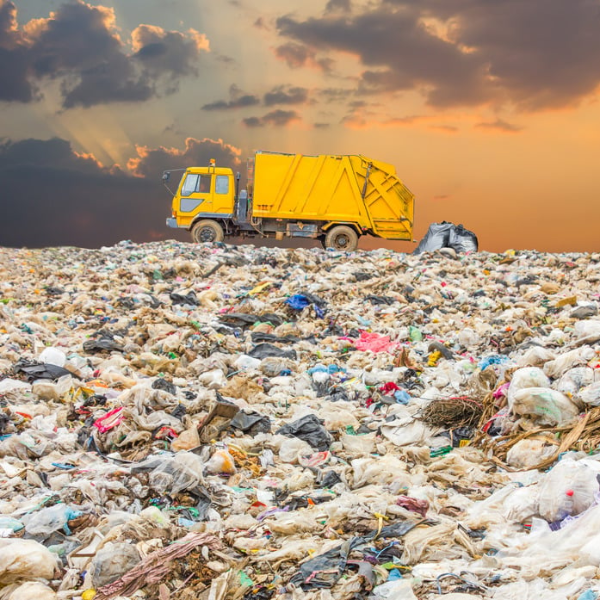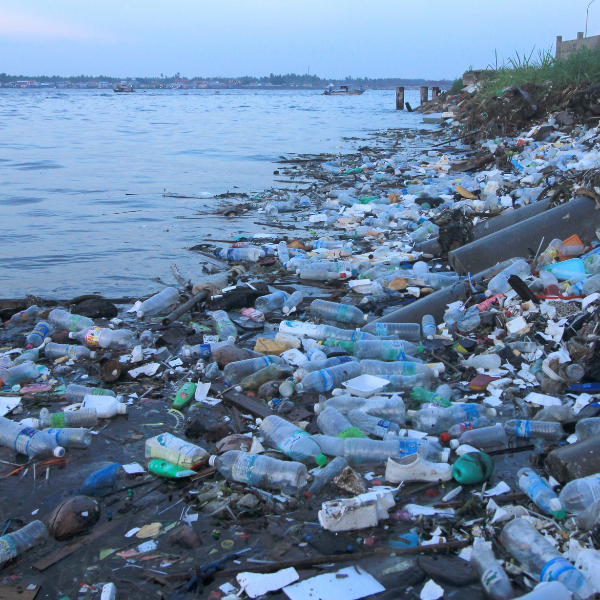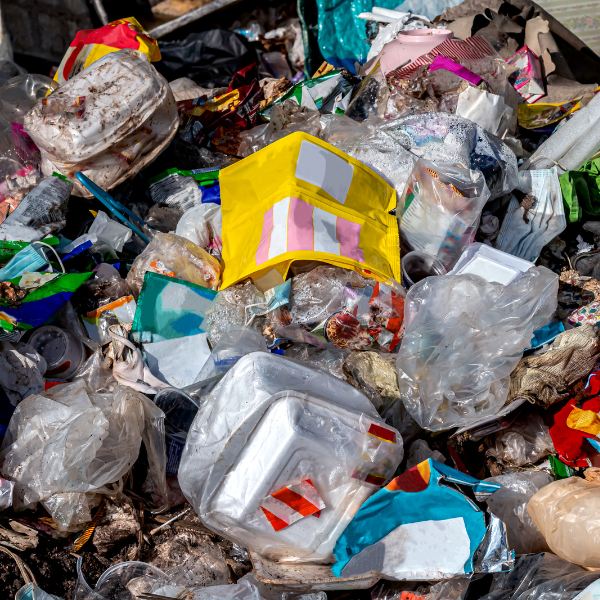Solid Waste & Recycling
New York is facing a solid waste crisis: It has been reported that most, if not all, of the state's landfills are nearing capacity and could close in the coming years. New York needs to develop a “circular economy,” one which:
-
Reduces the amount of wastes
-
Recycles as much as possible
-
Reuses products — particularly packaging — well before anything is discarded

NYPIRG is working to ensure that New York moves forward with policies that prevent the production of waste and improve successful recycling initiatives.
- The number one place that residential trash goes to is a landfill.
- Number two is export for disposal.
- Number three is garbage-burning incinerators.
- Last is getting recycled.
There is no evidence that the problem is getting better. In fact, the state’s residential recycling rate has been dropping over the past decade. By the way, these disposal methods can contribute to the climate crisis: Solid waste accounts for 12% of statewide greenhouse gas emissions, most of which comes from decomposing waste in landfills.
The state’s capacity to take this problem on is dwindling. According to the New York State Department of Environmental Conservation (DEC), “New York’s 25 municipal solid waste landfills have a combined landfill capacity of between 16 and 25 years.”
If the state’s landfills are filled to capacity in a decade or so, what will happen? Trucking the waste somewhere else is likely to be the option, but that is expensive and uncertain: Who knows for how long someone else will be willing to take New York’s trash? Already, New York City exports nearly all of its trash. Unless something changes, the rest of the state will have to follow that expensive route. Actions taken now could extend the lifespan of the state’s existing landfills, but waiting will make the options even more difficult.
Creating a new landfill is not cheap, and certainly landfill siting can be controversial — ditto for attempts to expand existing ones. Obviously, the state will want to extend the life of existing landfills as long as they can (although local communities understandably may oppose those efforts). In order to do that, programs must be put in place to encourage New Yorkers to reduce the amount of trash that they create.
The DEC is considering a trash surcharge that would both generate revenues for dealing with the solid waste disposal problems and encourage New Yorkers to reduce their wastes. Not surprisingly, adding a “tax” to encourage people not to produce trash can be unpopular, and these proposals raise questions about the impacts on lower-income New Yorkers.
So why not tackle the trash at the source? According to the DEC, paper and plastics make up nearly half of municipal solid wastes. There are two bills ready to take those two waste materials on, both of which would reduce packaging waste and promote the concept of a “circular economy” — one in which wastes are reduced to a minimum. These two solutions to New York's solid waste crisis are:
- Expanding and modernizing the Bottle Bill
- Passing the Packaging Reduction and Recycling Infrastructure Act
Bottle Bill

The Current Bottle Bill
Enacted in 1982 and expanded in 2009, the New York State Returnable Container Act, commonly known as the “Bottle Bill,” requires a 5-cent refundable deposit to be placed on eligible beverage containers — currently beer, soda, wine coolers, and water. For more than 40 years, the Bottle Bill has proven to be a highly effective program to reduce litter and increase recycling rates:
- Since it went into effect, beverage container litter has been reduced by 70%.
- In 2020, 5.5 billion plastic, glass, and aluminum beverage containers (totaling 241,505 tons) were recycled.
- In 2023, New York's redemption rate was at nearly 70%.
But we need to do more, and now is the time to modernize the Bottle Bill by:
- Expanding the Bottle Bill to include wine, spirits, hard cider, and most non-carbonated beverages: A deposit system can dramatically reduce litter and solid waste that would otherwise be discarded. Many other states have already added these containers to their laws.
- Increasing the deposit from 5 cents to 10 cents and use revenues to support recycling equity: States with higher deposit fees have higher redemption rates. Increasing the deposit could also generate more revenues for the state, with those additional funds being used to address limits on redemption options in low-income communities and other litter and solid waste problems.
- Boosting accessibility: Enforcement of the law is spotty. Use additional revenues to boost enforcement and to expand redemption centers into “food deserts” that limit consumers’ ability to redeem their deposits.
Packaging Reduction & Recycling Infrastructure Act

A significant contributor to our waste and plastic pollution crisis is that consumer brands are not on the hook to deal with the impact of their products’ packaging. Nearly 30% of the waste stream is packaging, much of which is unrecyclable. Product producers have no requirements or incentives to reduce packaging waste, create reusable products, make packaging easier to recycle, or boost market demand by using more recycled content.
The Packaging Reduction and Recycling Infrastructure Act will:
- Require companies to reduce their packaging by 50% over 12 years: Companies that sell consumer products in New York State would be required to reduce single-use plastic packaging. The remaining packaging would have to be redesigned to be refilled within a refill system or be truly recyclable (as opposed to downcycled).
- Force polluting companies to pay to deal with their packaging waste, saving taxpayers and municipalities money: New York City spends over $400 million of taxpayer dollars annually on waste exports. Companies will be required to pay for the management and recycling of their packaging waste, rather than passing that cost to taxpayers.
- Get 19 of the most toxic chemicals and substances out of packaging: Currently, lead, PFAS, formaldehyde, phthalates, bisphenols, vinyl chloride, cadmium, and many more toxic chemicals can be found in common food packaging. These chemicals are carcinogenic, endocrine disrupting, or harmful to human health in countless ways.
Actions, Links & Resources |
|
Sign the Petition | |
Blair Horner's Capitol Perspective | |
VIDEO: Solid Waste Management Plan | |
Events & Activities |
||||||||||||||||||||||||
|
||||||||||||||||||||||||









